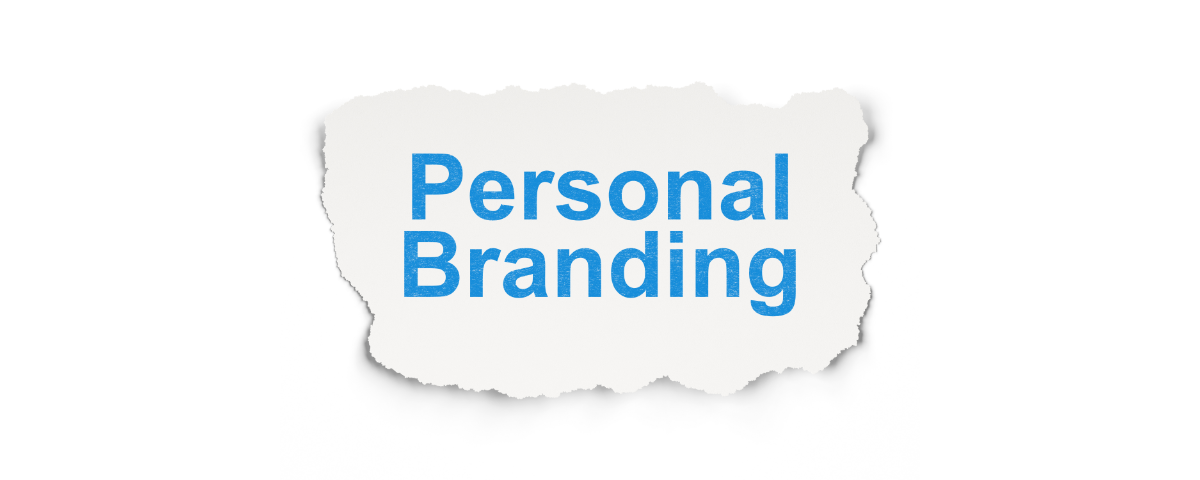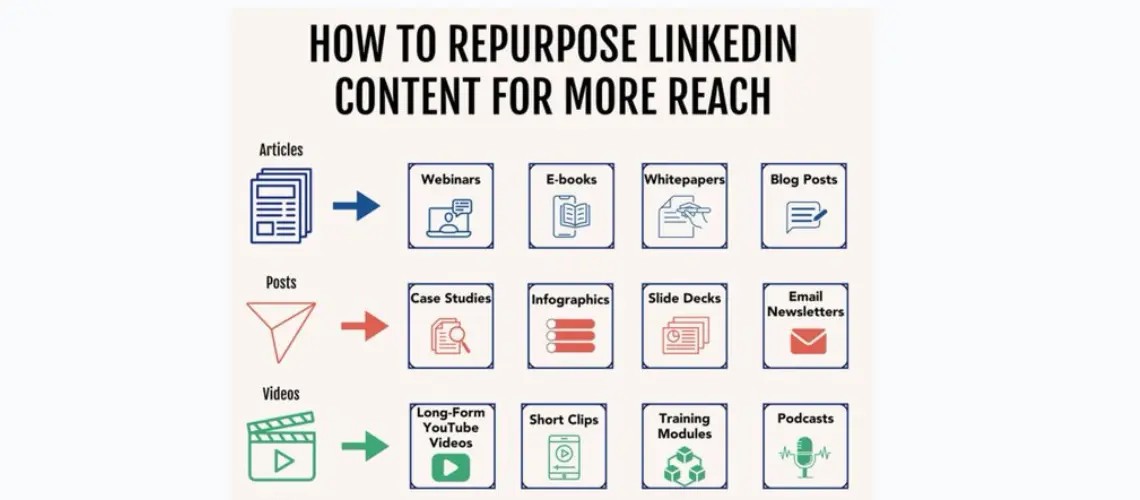Building a strong personal brand on social media is essential for professionals who want to stand out in their industry. Whether you’re a newbie or an experienced digital marketer, creating a cohesive and engaging online presence can lead to many opportunities for growth, collaboration, and success.
I remember when I first started out. I used to think personal branding was only for marketing professionals with years of experience or influencers wanting to build an online presence. Over time, I learned that anyone can build an online presence, no matter where they are in their career.
I also felt overwhelmed trying to figure out what to post, when to post it, and how to make sure it resonated with people. But I keep posting and sharing knowledge regularly, this helped build my follower count, my engagement increased, and I connected with amazing people who became not just followers, but friends and collaborators.
In this article, I will share some practical tips that have helped me build my personal brand on social media, and you can take our digital marketing course to learn how you can get started and the type of content to create to attract engagement.
What is Personal Branding?

Personal branding is the practice of developing and managing your reputation and image as an individual. It’s about showcasing your unique skills, values, and personality to create a recognizable and authentic presence in your field. For digital marketers, personal branding is especially important because it helps you stand out in a competitive industry.
From my experience, I’ve seen how personal branding can create new opportunities. When I began in digital marketing, I focused on sharing what I knew through social media and blogging. By consistently showing my expertise and values, I built a personal brand that connected with others. This approach not only helped me gain credibility but also attracted clients and job offers.
As you begin your journey in digital marketing, think about what makes you unique. What are your passions? What skills do you bring to the table? When you can clearly defining these aspects, you can create a brand that reflects who you are and what you stand for.
12 Tips For Building Your Personal Brand On Social Media

Get 50% Discount to Master ALL Aspects of Digital Marketing That Can Earn You $2,500 - $5,000 a month (Even if you are a complete beginner!)
Our students that intentionally implement what they learn from our digital marketing course make back the entire course fee within a single month or more after completing our course because our course gives them many income generating options with unlimited earning potential with no age or location barrier. The best part is no technical skills are required.
An opportunity to change your lifestyle and make money working from anywhere in the world. The results our students get from our digital marketing course prove this could be applied to any market or country and that it is designed for any skill level and work background.
*By signing up, you agree to our privacy policy and terms of service.
To build your personal brand on social media, it requires some effort. However, if you do it right, it can boost your career, help you make valuable connections, and position you as a leader in your field.
Below are some valuable tips for building your personal brand on social media.
Select Your Prefer Social Media Platforms
When you want to start building your personal brand, you need to choose the right social media platforms. Start by considering where your target audience spends their time.
For example, if you’re focused on visual content, platforms like Instagram and Pinterest might be ideal. On the other hand, if you want to share in-depth articles or engage in discussions, LinkedIn and Twitter could be more effective.
From my experience, I focus on LinkedIn and (X)Twitter more to share my post as a content marketer. When people ask me how many platforms should they focus on for a start, my advice it is better to focus on a few platforms rather than trying to be everywhere at once. This allows you to create quality content and engage meaningfully with your audience.
Each platform’s have their own features and user demographics. So take your time to test different platforms to see where you feel most comfortable and where your content feel best.
Remember, the goal is to connect authentically with your audience, so choose platforms that align with your brand and values.
Develop Your Branding Goals
Before you start building your personal brand on social media, it is very important to define your branding goals. What do you want to achieve? Are you looking to attract new clients, land your dream job, or position yourself as a thought leader in your industry?
Having a clear objective when starting will guide your content posting, help you measure the success of your efforts and everything you do on each of the platforms.
When I set out to build my personal brand, my primary goal was to establish myself as an expert in digital marketing and social media. I wanted to attract potential clients and collaborators who aligned with my values and expertise.
I started using Linkedin and X (formerly Twitter) to start sharing valuable content consistently and engaging with my audience, I was able to achieve this goal and even exceed my expectations.
As you develop your branding goals, make sure they are specific, measurable, and achievable. Next, break each of the goals down into smaller, actionable steps to make the process more manageable.
Establish a Personal Branding Strategy

You’ve probably heard the term “business strategy” used in the workplace. But what is personal branding strategy, exactly? A personal branding strategy is a way for an individual to enhance their professional reputation and unlock new opportunities.
Creating a strategy is vital for making an impact on social media. Start by outlining your goals, the people you want to reach, and the main ideas you want to share. Consider what you want to communicate and how you want others to see you. When you are clear about this from the start, it will help you create content and engage with others in a way that aligns with your brand.
You should choose a tone and style that reflects your personality and stick to it across all platforms. Whether you prefer a professional approach or a more casual vibe, make sure it aligns with your brand.
When you have a clear strategy in place, you’ll not only build a recognizable brand but also foster genuine connections with your audience.
Create and Regularly Share Content
Creating relevant content is crucial for building your personal brand on social media. When you are creating content, you should focus on topics that matter to your audience and showcase your expertise.
So how can you do that, you need to think about the challenges and interests of your followers. What questions do they have? What problems are they trying to solve? When you address these needs, you’ll show that you care and can provide valuable insights.
Also use your experience to share practical tips, and personal stories about your field and industry. This will not only help you build trust but also help you connect with your audience on a deeper level..
When creating content, dont just write try one type of content, make it interesting by using different formats. Ross Simmonds on X mentioned different formats that you can use for your LinkedIn post and they include writing articles, posting videos, or carousel. When your content is useful and relevant, you’ll attract more followers
Finally, keep up with trends and news in your field and industry if you want to be a thought leader. Share your opinions and views about different conversations in the industry and learn more from others.
Build A Consistent Posting Schedule
Posting regularly on social media can consume a lot of your time if don’t have a good plan. To post regularly, you need to have a schedule for each of your posts. This will help you to keep your audience engaged and eager for your content.
Start by determining how often you can realistically post, whether it’s daily, a few times a week, or weekly. From my experience, using a content calendar can help you plan ahead and stay organized. This way, you won’t scramble for ideas at the last minute.
When I started building my brand on social media, this is how my posting schedule looked like:
- Twitter: 3-5 times a day (short, informative tweets)
- LinkedIn: 2-3 times a week (professional insights, industry news)
- Instagram: 3-5 times a week (visual content, stories, and reels)
- Facebook: 2-3 times a week (in-depth content, personal stories)
With this posting schedule, I was able to post regularly on all the platforms . Also, I want you to prioritize relevant content that will likely see better engagement than posting frequently without a clear strategy when you are just starting out.
Keep Your Voice, Image & Tone Consistent
If you want to build your brand, you need to maintain a consistent voice, and tone on social media. This consistency helps your audience recognize and connect with you faster.
Start by defining your brand’s personality. Are you friendly and approachable, or more professional and authoritative? Whatever you choose, stick to it in every post and interaction.
From my own journey, I learned that consistency builds trust. When followers know what to expect from you, they’re more likely to engage and share your content. I use the same profile picture, color scheme, and writing style across platforms to create a cohesive look and this has helped grow my brand massively on social media
Additionally, make sure your messaging aligns with your values and expertise. Each post should reflect who you are and what you stand for. When you are consistent, it will help you strengthen your brand and foster deeper connections with your audience.
Import Your Contacts
Don’t overlook the role your contacts can play when building your online presence or expanding your social media reach. Social media platforms like Linkedin allow you to sync your email address book or phone contacts on their platform.
This allows you to connect with people you already know and build a solid foundation for your personal brand. This strategy is particularly effective for professionals who have a wide network, as it allows you to engage with familiar faces and potentially reach new audiences through their connections.
From my experience, importing contacts can lead to increased engagement, as people are more likely to interact with someone they recognize. It also demonstrates that you value your existing relationships and are committed to building a strong, authentic personal brand.
Be Active and Responsive
When you just start posting, you might not be getting comments on your post yet, don’t let that discourage you from being active on your social media channels.
You can engage with other people’s posts by dropping your comments. This can bring the regular engagement you want to your page and show your audience that you have thoughts and opinions that are valuable.
Make sure you are responding to comments, messages, and mentions on your timeline as this will help create a sense of community and foster trust with your followers.
From my experience, taking the time to interact with followers can lead to deeper connections and increased loyalty. Share updates, ask questions, and participate in discussions to keep the conversation flowing.
Additionally, staying active helps you stay informed about industry trends and audience preferences. When you are present and responsive, you not only enhance your brand’s visibility but also position yourself as a reliable resource in your field.
Join industry groups
Joining groups in your field allows you to connect with professionals who share your interests and challenges. When you belong to a community, it allows you to participate in discussions, you can gain insights, share your knowledge, and stay updated on the latest trends.
Being active in industry groups can open doors to valuable networking opportunities and connections. When you engage with members of he group, it will helps you learn alot and also positions you as a thought leader in your field.
Additionally, these groups often provide access to industry trends and resources that can help you stay ahead. So a group ha conisi of like minds cannot only boosts your visibility but also strengthens your credibility.
Identify and Engage with Influencers
Influencers are individuals that have built a name and are very popular online. Depending on your field, if you are just starting, I will recommend you find an influencer in your niche.
Start by researching individuals who align with your values and expertise. For instance, if you are into marketing, there’s a lot you can learn from Neil Patel, you can follow him on any of the platforms to stay connected.
Look for those who actively engage with their post to learn what they are interested in and create content that resonates with your target market in a better way. Also once you’ve found potential influencers, don’t just follow them, comment on their posts, share their content, and participate in discussions..
Influencers often appreciate when others recognize their work, and this can open doors for collaboration or mentorship. Additionally, when reaching out, consider sending thoughtful messages or questions about their post to start a meaningful conversation, and establish rapport.
Repurpose Content

Instead of starting from scratch, you can always revisit your previous posts, articles, or videos that performed well. You can transform them into different formats, such as turning a blog post into an infographic or a video series.
For the LinkedIn post, Ross Simmonds lists out different ways you can repurpose your content. this will help give the content more visibility and also drive traffic to your page.
This approach not only saves time but also allows you to reach new audiences who may have missed your original content. You can always update the information to reflect current trends or add fresh insights to make it relevant again.
Additionally, repurposing helps reinforce your key messages and themes, making your brand more memorable. By breathing new life into existing content, you maintain engagement while showcasing your expertise.
You can learn more about various ways you can repurpose content.
Monitor and Adjust Your Branding Strategy
As you are building your brand online, you should regularly assess your content performance and audience engagement to identify what identifies the area you are doing well and where there is a need for improvement.
You can use the platform analytics tools or third-party tools Sprout Social, Buffer, or Google Analytics to track metrics like likes, shares, comments, and follower growth on your pages.
You should be flexible and open to change when analysing this performance. If a particular type of post isn’t performing well, don’t hesitate to experiment with different formats or topics. Also, engage with your audience to gather feedback and understand their preferences better.
This interaction can provide valuable insights that help you refine your approach. By actively monitoring your strategy and making necessary adjustments, you’ll stay relevant and continue to build a strong personal brand that connects with your audience effectively.
Which Social Media Platform is the best for personal branding?

Choosing the best social media platform for personal branding largely depends on your target audience and the type of content you want to create.
Some of the top social media platforms and their strengths:
1. LinkedIn
With over 1 billion members in more than 200 countries and territories worldwide. LinkedIn is the number one social media network for professionals looking to build a career-focused brand. It’s ideal for sharing industry insights, networking, and showcasing your expertise. When you engage with relevant content can enhance your credibility and connect you with potential employers or clients.
2. Instagram
If you want to build a brand that relies on visuals, Instagram is a fantastic choice, It has over 2 billion monthly active users. Also, it has over 500 million daily active users, making it the world’s 4th largest social media network. It’s perfect for creatives, photographers, and lifestyle brands. Use high-quality images and engaging stories to connect with your audience on a personal level.
3. X (formerly Twitter)
X is great for sharing quick thoughts, industry news, and engaging in conversations. It allows for real-time interaction and can help you establish authority in your niche through insightful tweets and threads. When you post relevant content on the platform, it will help you gain more atention and visibility
4. Facebook
With a massive user base of over 3.065 Billion Monthly Active Users, this is an increase from 12 months prior in Q4 2022 when they had 2.96 billion users. Facebook is useful for building community and sharing longer content. It’s effective for connecting with diverse audiences and promoting events or services.
5. TikTok
This is an ideal platform for Gen Z to express themselves, connect with others, and showcase their creativity. For those who are comfortable with video content, TikTok offers a unique platform to showcase creativity and personality. It’s especially effective for reaching younger audiences and can quickly amplify your brand through viral content.
Ultimately, the best platform for personal branding is where your audience is most active and where you feel comfortable sharing your authentic self.
Conclusion
Building your personal brand on social media is an exciting journey that can open doors to new opportunities and connections. When you are just get sarted, you need to define your expertise, engaging with your audience, and consistently sharing valuable content that can help you create a strong and authentic presence online.
If you’re ready to take your personal branding to the next level, consider taking our comprehensive digital marking course that will help you with proven strategies and practical tips to enhance your online presence and make a lasting impact.
Remember, personal branding is not just about self-promotion; it’s about building relationships and providing value to your community. So dont be left out on how to use online branding to get more opportunities.
FAQs
What is personal branding on social media?
Personal branding on social media is the process of creating and promoting your unique identity online. It involves sharing your skills, values, and personality to influence how others perceive you. By managing your online presence, you can establish yourself as an expert in your field and attract opportunities.
Why is personal branding important?
Personal branding is important because it helps you stand out in a crowded market. A strong personal brand can enhance your credibility, increase your visibility, and open doors to new career opportunities. It allows you to connect with your audience on a deeper level and build trust.
How do I choose the right social media platform for my brand?
Choosing the right platform depends on your target audience and the type of content you want to share. For professional networking, LinkedIn is ideal. If you focus on visuals, consider Instagram or Pinterest. For quick updates and engagement, Twitter works well, while video content thrives on TikTok and YouTube.
How often should I post on social media?
The frequency of your posts depends on the platform and your audience. Generally, aim for 1-2 posts per day on Instagram and 3-5 times a week on LinkedIn. On Twitter, you can post multiple times a day. Consistency is key, so create a posting schedule that works for you.
What type of content should I create for my personal brand?
Create content that reflects your expertise and interests. This can include industry insights, practical tips, personal stories, and engaging visuals. Use a mix of formats such as articles, videos, and infographics to keep your audience engaged. Always focus on providing value to your followers.
Related post
11 Effective Ways to Use Social Media to Promote Your Content
How to Grow Your Small Business Using Instagram in 2024
What Is Social Listening & Why Is It Important?
How to Use B2B Social Media Marketing Strategy to Attract New Customers


